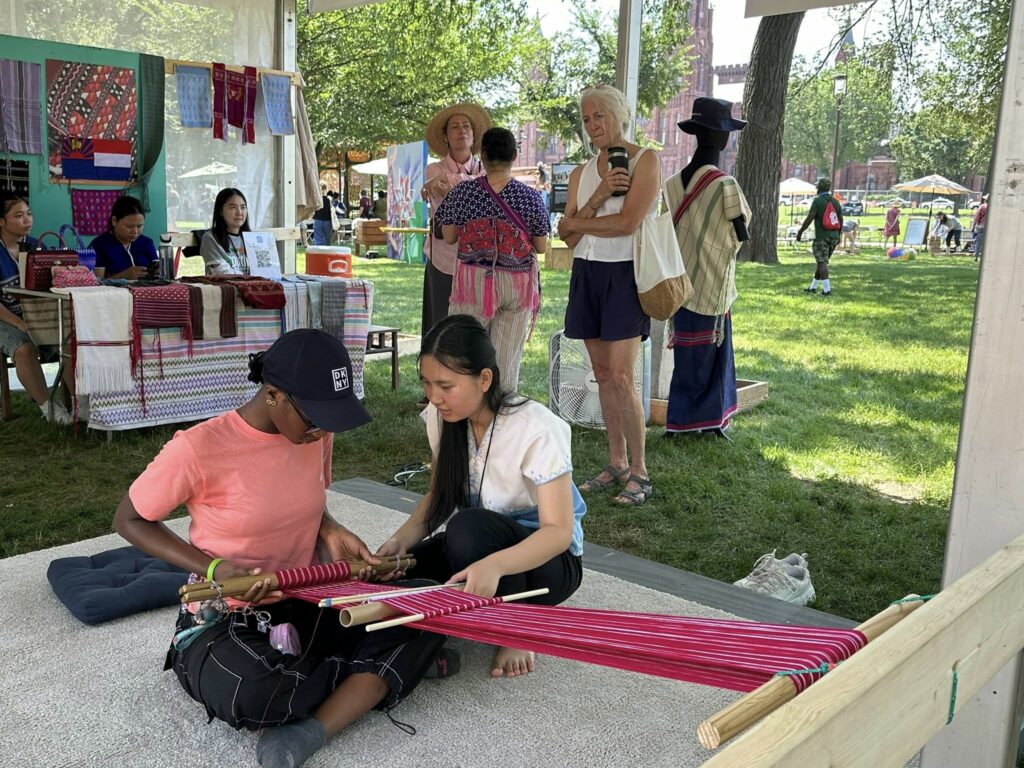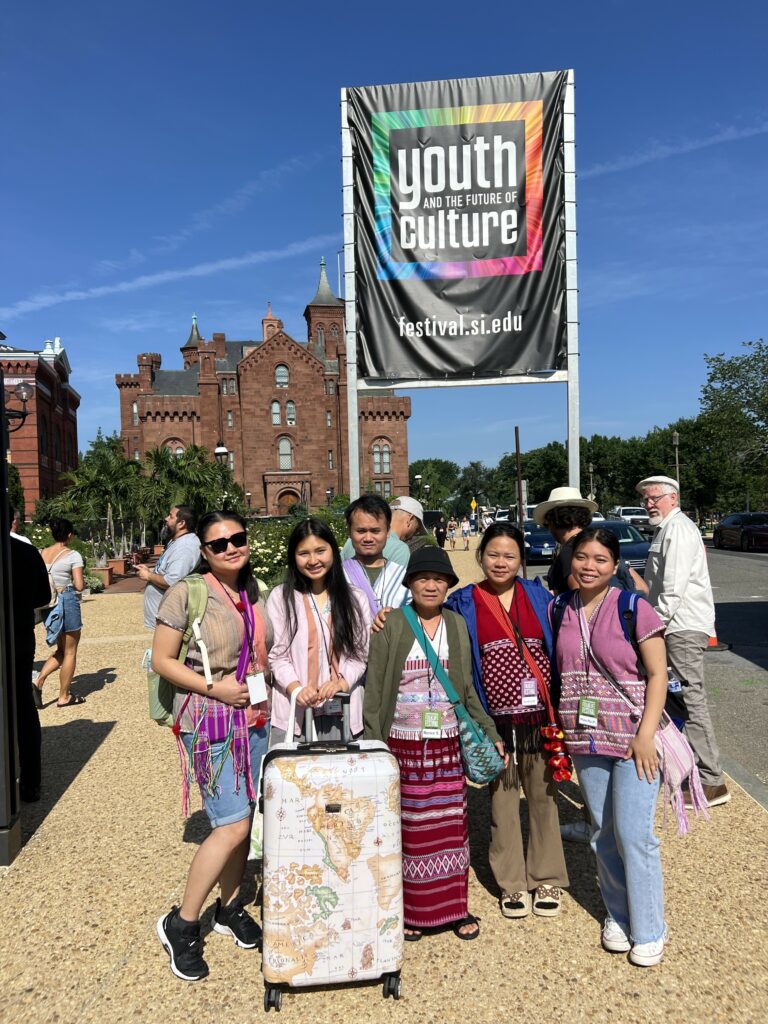
It is said art is the closest a person can come to understanding how another feels. For the art of Karen weaving, layered between the colorful threads that form brilliant patterns is the celebration of cultural tradition and resilience. If Karen culture could be described through only one action, weaving would undoubtedly be it.
Every Wednesday, women within the local Karen community assemble at the East Side Freedom Library in Saint Paul to engage in traditional Karen weaving. Aptly titled “The Weaving Circle”, the weekly program provides refugees with a space to practice and teach their weaving craft, while also an opportunity to sell their artwork.
Many of the women, some being elderly, learned to weave in Burma or Thailand when they were children. Unlike a curious hobbyist stumbling upon crocheting on Pinterest, these women see the practice as more than a way to enjoy an afternoon. For them, weaving is storytelling, explaining the Karen experience to others. It represents a way of expressing their individuality through cultural pride and tradition. And, like the firm threads they hem together, these women hold the art form close to their hearts, anxious to preserve it for future generations in the Karen community.
While the Weaving Circle meets on a weekly basis, the women weave daily, bringing their projects back to their homes during the week. Some make regular visits to local high schools, teaching weaving to Karen youth. Others will participate and sell their art at local fairs, like the Swede Hollow Art Fair or Little Mekong Night Market, using KOM to facilitate the sale. Finished products include woven bags, shirts, sarongs, table runners, scarves, and dresses.
Weaving Circle Coordinator Inspired By Elderly Weavers
Overseeing the Weaving Circle is KOM Weaving and Civic Engagement Coordinator Hta Thi Yu Moo. Born in a refugee camp in Thailand in 1994, Hta Thi moved to Minnesota with her family in 2007. In her 11th year at KOM, Hta Thi began as a Youth Development Coordinator, later being promoted in 2017 to her current roles within the organization.
In an interview for this newsletter, Hta Thi put it simply: “I’m glad I get to work with the weavers.”
She noted the elderly women in the program continue to inspire her, teaching everyone new patterns, styles, and weaving techniques. These elders had spent the majority of their lives in Burma, home of the Karen culture. Their perspectives fascinate Hta Thi, who is curious to learn about their way of life before moving to the U.S.
She added one characteristic of elderly weavers is strength. At such old ages, some may not be able to drive or struggle to perform other daily functions. However, they continue to weave, remembering vividly their cultural heritage.
And, as older weavers in the local Karen community continue to practice and teach this traditional artform, they are delighted to see more and more younger members getting involved.
New to the program in 2025, the Weaving Circle added a second section for Karen youth. Many young adults or teens did not learn how to weave growing up, either because they were born in the U.S. or too young to remember life before moving over to the states. Inspired by their elders, they are motivated to continue this cultural practice.
Hta Thi explained it is a “proud moment” when a Karen person successfully weaves a piece of art for the first time. The finished product could be a shirt, bag, or scarf. It is considered a major feat–-a coming of age moment—for many of them. After all, Karen weaving is an extremely meticulous skill to hone.
Smithsonian Folklife Festival
In July 2025, Hta Thi and four (three youth, one adult) weavers represented the KOM Weaving Circle at the Smithsonian Folklife Festival in Washington, D.C. after being invited by event organizers.

Hta Thi noted it was the first time their weaving program left the state for an event. Over the six-day festival, they presented weaving demonstrations, educating a wider audience about Karen weaving.
Rosie Say, an adult weaver and instructor with the program, shared: “There are still so many people from different backgrounds who don’t yet know about us or our traditions. That’s why I’m especially excited to [have gone] to Washington D.C. and share the beauty of our culture.”
Youth weaver Ku Say seconded this sentiment, adding, “Whether it’s our weaving or the food we make, these are things I’m truly proud of.”
The plight of the Karen people, their history, and cultural practices are unknown to most around the U.S., even in Minnesota where there are around 20,000 Karen residents. The Weaving Circle’s exhibition in the nation’s capital is a meaningful step in spreading awareness of who they are and the unique characteristics of their culture.
In addition to weaving, the group prepared traditional rice porridge, including vegetable ingredients chosen to represent the war-time origins of this dish. While fleeing persecution in Burma, Karen refugees had to forage edible vegetables and other items from surrounding forests. Described as “soupy in taste”, Hta Thi said they were unable to serve the porridge due to the festival’s policy on allergy concerns.
Published: November 17, 2025


 (651)788-7593
(651)788-7593


